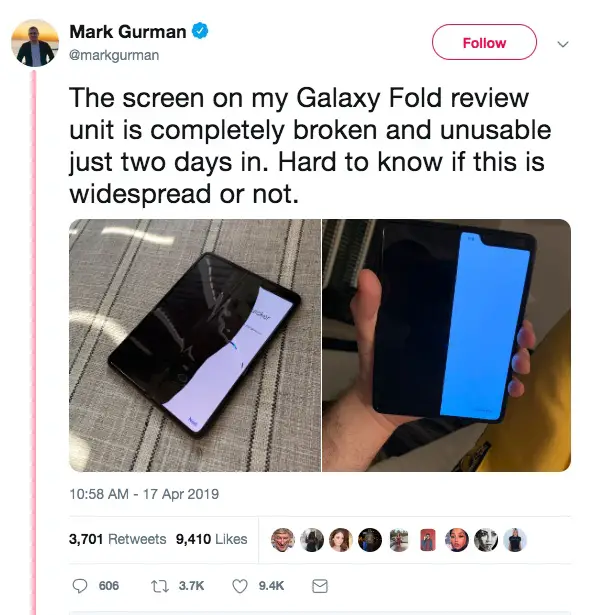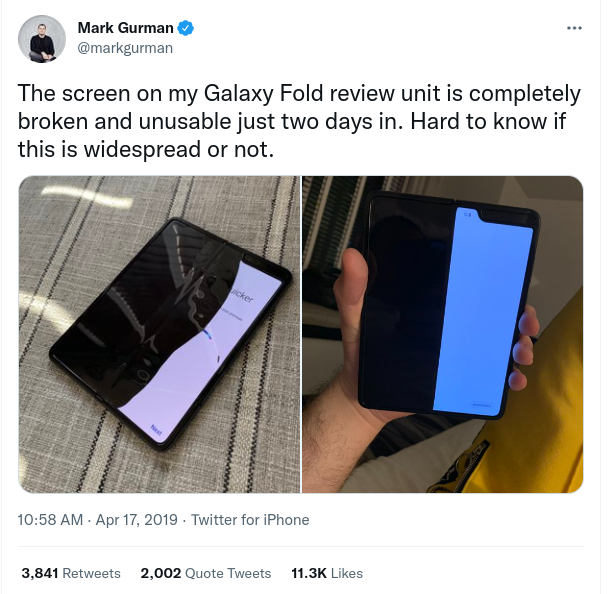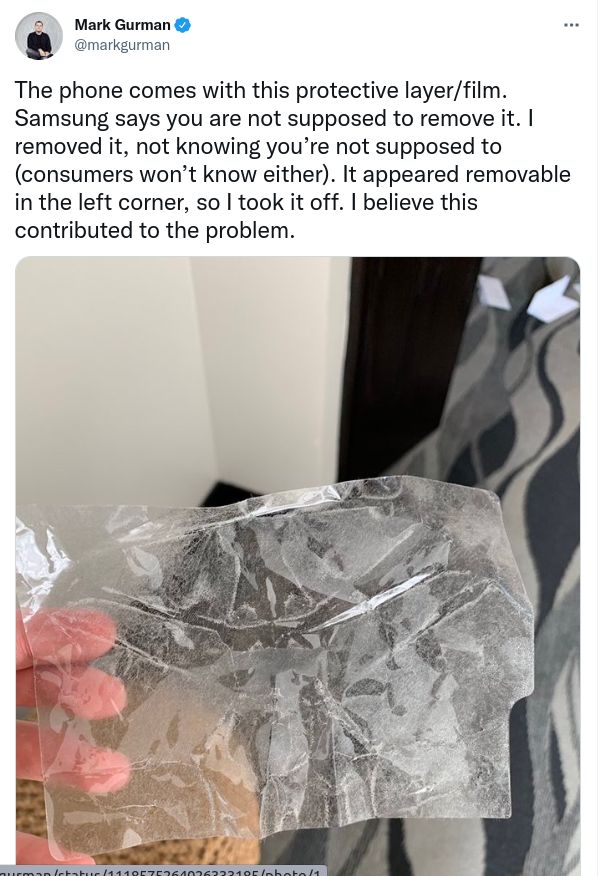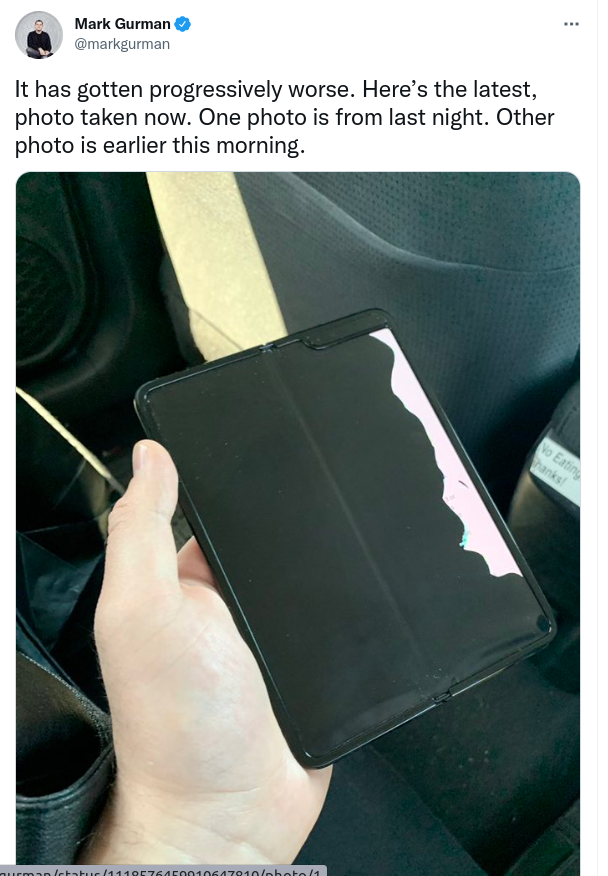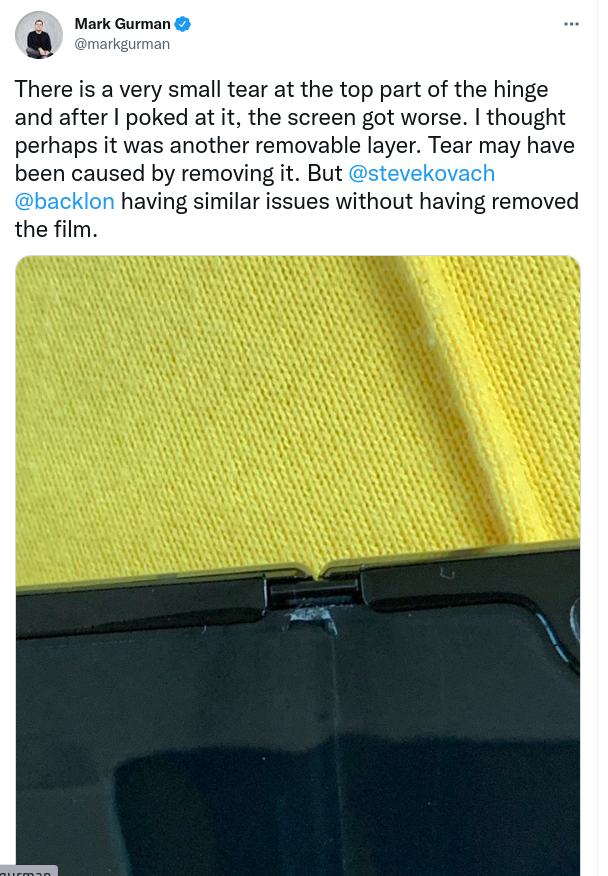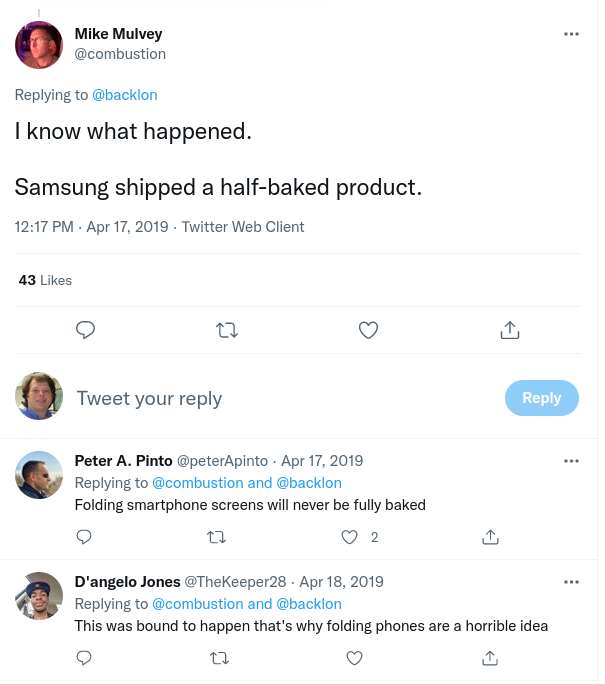; Date: Thu Apr 18 2019
Tags: Samsung »»»» Foldable Screen »»»» Apple Flexgate »»»»
With great fanfare Samsung recently introduced the Samsung Fold, it is a cellphone with the first foldable screen on any device. That sounds kind of cool, that you might not require adding a screen protector to keep the screen safe. If it works I'm sure all the cool kids will salivate over it. But, in light of the Apple Flexgate problem we should not be surprised to learn that screens on the Samsung Fold's given to Tech Reviewers are breaking.
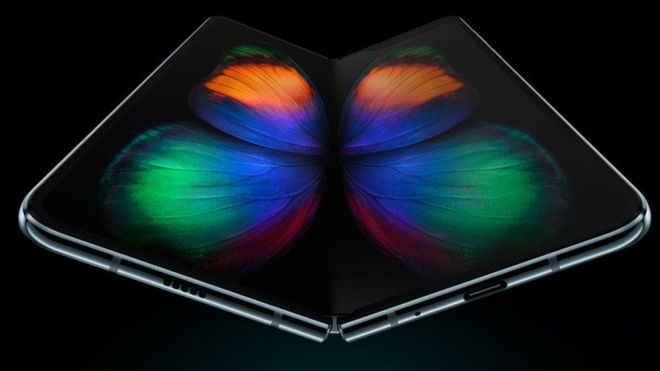
Ideally what you get is the picture just above - a foldable clamshell phone where the screen is the entire surface.
Presumably the idea is that
- When not in use, the phone is in your pocket and the screen is protected.
- When in use, you have a much larger screen.
Samsung has handed review units to Tech Reviewers - the famous one - and within a couple days of use these reviewers are now tweeting pictures of a serious problem. That the foldable screen is failing and breaking. Details are shown below.
One reviewer, Mark Gurman, noted he removed a protective film from the device which Samsung said not to remove. According to Gurman, the film looked like it should be removed, and he thought typical end-users would remove it. However reviewers who did not remove the film also report breakages.
Samsung issued a statement (via
The Verge)
A limited number of early Galaxy Fold samples were provided to media for review. We have received a few reports regarding the main display on the samples provided. We will thoroughly inspect these units in person to determine the cause of the matter.
Separately, a few reviewers reported having removed the top layer of the display causing damage to the screen. The main display on the Galaxy Fold features a top protective layer, which is part of the display structure designed to protect the screen from unintended scratches. Removing the protective layer or adding adhesives to the main display may cause damage. We will ensure this information is clearly delivered to our customers.
Samsung claims the display is supposed to last for 200,000 fold operations without breaking. For several units to break almost immediately is certainly not 200,000 fold operations. Samsung should be ashamed of itself.
To reiterate, at least one reviewer reports that the screen breaks even if the protective layer is not removed.
Similar to the Apple Flexgate issue
This result should not be surprising to anyone who's heard of the Apple Flexgate problem.
Flexgate is an issue with Apple Retina laptops from 2015-2017 model years. In 2015 Apple switched to a display where the non-replaceable cable is deeply integrated with the display, and the cable is observed to break after some number of flexings. It's believed the cable, which is a flexible plastic ribbon cable, is just a smooch or two too short, causing the flexible plastic to break, breaking the display. Because the cable is integrated with the display, the broken cable requires replacing the entire display, which costs several hundred dollars. For the 2018 model year, Apple made the cable just a smooch or two longer, presumably in an effort to quietly fix the problem without public acknowledgement.
Looking at the Samsung Fold tweets it looks like a similar problem. In the Apple Flexgate case we have a circuit on flexible plastic breaking after a number of foldings, and in the Samsung Fold case there is what must be a circuit on flexible plastic breaking after a number of foldings.
